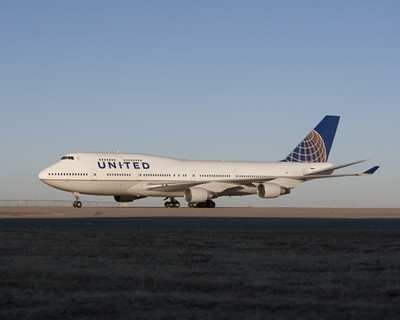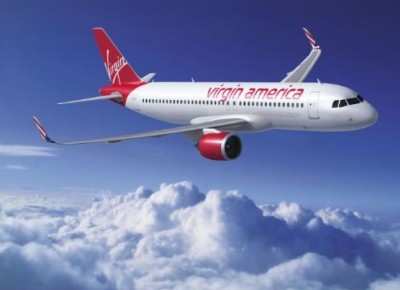The Amadeus Worldwide Estimate Of Ancillary Revenue Reveals A
$9.9 Billion Increase
All those fees charged by airlines seems to be paying off ...
literally ... at least for the carriers that charge them. A new
report indicates that "ancillary revenue" has become a crucial
component in the global airline industry’s profit toolbox.
The International Air Transport Association slashed its 2011
industry profit outlook to $4 billion and revealed that carriers
will spend $10 billion more on jet fuel this year. The $32.5
billion contributed by ancillary revenue has lifted the airline
industry from a loss-making position and continues to provide a
very effective hedge against runaway fuel bills.

Earlier this year, Amadeus and IdeaWorks reported the ancillary
revenue disclosed by 47 airlines in 2010. These statistics were
applied to a larger list of more than 200 airlines to provide a
truly global projection of activity for 2011. The Amadeus Worldwide
Estimate of Ancillary Revenue for 2011 is the second year Amadeus
and IdeaWorks have undertaken the task of calculating global
ancillary revenue activity.
“As ancillary revenues continue to grow rapidly, we are
now seeing increasing interest from full service carriers around
the world, which are also starting to implement ancillary services
through global distribution systems, such as Amadeus. KLM and
Iberia, for instance, have just joined the ranks of carriers
implementing the Amadeus Ancillary Services solution for travel
agencies. The model is now focusing on services that increase the
scope of the product offering and reinforce the brand rather than
unbundle the ticket price,” said Holger Taubmann, VP
Distribution, Amadeus.
IdeaWorks believes that the majority of ancillary revenue for US
major airlines is generated by the sale of frequent flier miles,
notably those linked to co-branded credit card activity. This
financial activity exceeds $6.5 billion annually in the US alone.
Baggage fees for US carriers represent approximately 20% of their
ancillary receipts. The remaining revenue is produced by a large
array of à la carte and commission-based activities.

Other sources include on-board sales of food, beverages, Wi-Fi,
and hotel bookings. In addition, airlines offer an ever-increasing
selection of services that add to traveler convenience such as
priority security screening, early boarding, and exit row seat
assignments.
The IdeaWorks analysis reveals natural groupings (or categories)
based upon a carrier’s ability to generate ancillary revenue.
The “percentage of revenue” results associated with
four defined categories were applied to a worldwide list of
operating revenue disclosed by 203 airlines.2 The following
describes the four categories:
- Ancillary Revenue Champs. These carriers
generate the highest activity as a percentage of operating revenue.
The average achieved by this group was 19.8%, which is slightly up
from 19.4% for 2010. Examples include AirAsia, Aer Lingus, easyJet,
Ryanair and Spirit Airlines.
- Major US Airlines. US-based majors generate
strong ancillary revenue through a combination of frequent flier
revenue and baggage fees. The average for this group was 11.9%,
which is a sizable increase above the 2010 rate of 7.2%. Examples
include Alaska, American and United.
- Low Cost Carriers. LCCs throughout the world
typically rely upon a mix of à la carte fees to generate
good levels of ancillary revenue. The average in this group was
6.5% and is above last year’s 5.4%. Examples include AirTran,
Blue1, IndiGo, Jazeera Airways, Pegasus and Spring Airlines.
- Traditional Airlines. This category represents
a catch-all for the largest number of carriers. Ancillary revenue
activity may consist of fees associated with excess or heavy bags
and limited partner activity for a frequent flier program. The
average here remained at 2.9%. Examples include Air China,
Emirates, Finnair, LAN, Qatar Airways and Singapore Airlines.
“Outside of the US market and the global LCC sector,
airlines tend to choose a model that complies with industry
standards rather than a customized approach to the development and
deployment of their ancillary services,” said Julia Sattel,
VP Airline IT, Amadeus. “Our philosophy is to balance the
productivity and efficiency that industry standards bring with the
desire for some airlines to customize the way in which their
product is packaged and sold.”

“Whatever the model, there is no doubt that the growth of
ancillary sales is here to stay. The Electronic Miscellaneous
Document (EMD) standard for the fulfillment of ancillary sales is
rapidly gaining momentum. According to IATA, there are now 28
airlines in the world that are EMD capable, 15 of which are using
Amadeus’ EMD Server and have issued over 2.5 million EMDs
this year alone,” said Sattel.
The US Major Airlines category continues to produce a commanding
share of global ancillary revenue: The $12.5 billion result (38% of
the global total) represents just seven airlines: Alaska Airlines,
American, Continental, Delta, Hawaiian, United, and US Airways.
Compare this to the second largest piece of the pie at $10.9
billion (34% of the global total) which is generated by a far
larger group of 140 airlines, the Traditional Airline category. As
proven by this revenue result, US-based airlines have readily
adapted to an à la carte world, but they also benefit from
consumers who are keen to get frequent flier miles.
Carriers in North America began to emphasize ancillary revenue
after the oil price shock of 2008. Not surprisingly, this region
leads the world for ancillary revenue production. IdeaWorks
estimates the region achieved a stunning 72% increase above the
level estimated for 2010. Ancillary revenue rose across the globe
and was largely driven by traffic and passenger revenue increases
as the industry recovered from the 2009 recession.
 ANN's Daily Aero-Linx (04.15.24)
ANN's Daily Aero-Linx (04.15.24) Classic Aero-TV: 'No Other Options' -- The Israeli Air Force's Danny Shapira
Classic Aero-TV: 'No Other Options' -- The Israeli Air Force's Danny Shapira Aero-News: Quote of the Day (04.15.24)
Aero-News: Quote of the Day (04.15.24) Airborne 04.16.24: RV Update, Affordable Flying Expo, Diamond Lil
Airborne 04.16.24: RV Update, Affordable Flying Expo, Diamond Lil ANN's Daily Aero-Term (04.16.24): Chart Supplement US
ANN's Daily Aero-Term (04.16.24): Chart Supplement US





